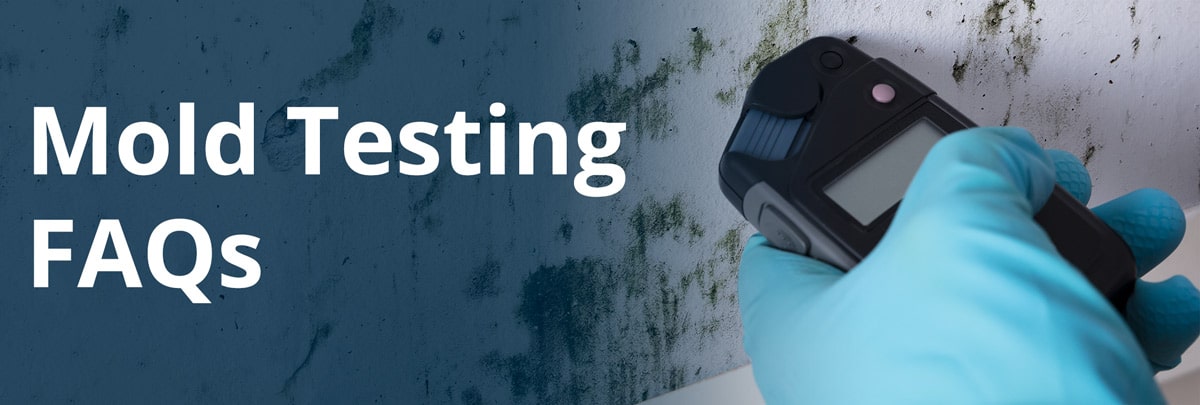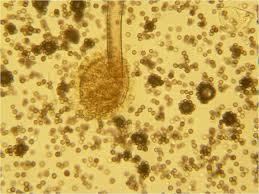
What is mold?

Mold is a naturally occurring microscopic living organism that consumes and decomposes organic materials. Organic materials can include paper, dust, fabric, wood, dirt, plants, food, etc… With mold spores’ ranging in size from 2 -10 microns makes them invisible to the human eye. Mold is critical to our planet as it is necessary to break down organic materials and return them to the soil. Mold needs oxygen, moisture, heat and a food source to grow and reproduce. When mold has the proper growing conditions, it will begin to disperse spores and colonize. When this starts to happen, you will begin to see discoloration on the materials, and it will continue to grow until the humidity and moisture are removed from the environment. Once the moisture source and humidity are gone, mold will dry up and go dormant until its either removed or the moisture source returns. If the moisture source returns the mold will begin growing and reproducing again. Mold grows best indoors when humidity is above 60% and temperatures are above 70° F.
Where is mold found?
Mold can be found both indoors and outdoors. See below for some examples of areas that mold can be found.
In homes: mold is often found in attics, basements, bathrooms, and kitchens. Causes can include uncontrolled humidity, incorrect venting, inadequate airflow, water intrusion, leaky pipes, and or flooding.
Outside: mold can be found in shady, damp areas. For example, soil, plants, rotting piles of leaves, wood, or any other organic matter. Mold is critical to our planet as it is necessary to break down organic material into the soil.
I smell a musty odor, but I do not see mold, should I still have an inspection?
Before we can answer this question, we need to determine if its something you have brought into the home. Did you add anything new to the home? For example, sporting equipment, musty clothing, old books, or anything else that can be causing this odor. If you answered yes to any of these, you will need to remove the items that are causing the odor as quickly as possible.

If you have answered no to any of these questions, then you should consult a professional to inspect the areas of concern. When mold is reproducing it off-gasses as it decomposes organic materials. These off-gases are what you are smelling. If you smell a musty odor then there is a good possibility that mold is present. Mold can be hidden inside walls, behind appliances, above ceilings on furniture, or anywhere a moisture source is present. Once the mold is found it must be remediated as soon as possible to prevent adverse health effects to you and your pets and further damage to the building materials in your home.
Can mold harm me?
Mold affects everyone differently. Depending on the amount and species of mold, that is present you and your pets can have an allergic reaction. Some do not have any reaction at all while others experience mild to severe allergic reactions as seen below and can worsen over time.
- runny nose, red irritated eyes, a dry cough, skin rashes, a sore throat, sinusitis, and or wheezing.
- People with compromised immune systems, or asthma, can develop more severe forms of these reactions and other severe reactions such as headaches, exhaustion, ongoing coughing increasing at night, reoccurring chest colds, fevers, and difficulty breathing.
How much mold exposure is dangerous?
Mold is always present indoors and outdoors. For some, depending on your sensitivy and the species even the slightest amounts of mold can have adverse effects on you and your pet’s health. For others, that don’t have allergies can experience health effects from exposure over a longer period. Several types of mold can grow inside a home. Some molds are more dangerous than others. See below for some of the most dangerous types of mold and the long term health effects they can cause. These effects can worsen over time. Click on the species underlined to find out more from the centers for disease control.
- Stachybotrys – AKA “black mold,” Stachybotrys is one of the most dangerous species of mold and can cause flu-like symptoms, headaches, Memory loss, and severe respiratory damage.
- Chaetomium – Can cause asthma and other breathing problems.
- Aspergillus – Allergic reactions, lung infections, and infections in other organs.
- Penicillium – Headaches, itchy watery eyes, runny nose, congestion, coughing, sneezing, and rashes
- Fusarium – Ingestion of Fusarium on mold-contaminated food can cause mycotoxicosis – which is a mycotoxin. Mycotoxins can cause acute poisoning to longer-lasting health effects like immune deficiency and cancer.
- Alternaria – Is typically a mold that is found outside the home but can sometimes be found inside the home. If Alternaria is found indoors it can cause hay fever or undesirable reactions that sometimes lead to asthma.
Should I have the mold tested?
If you or anyone in your home are experiencing allergies whether they are mild or more severe, we recommend having an industrial hygienist perform a comprehensive mold assessment of your home.
While the hygienist is at your home, they will be testing the air, surfaces, temperature, humidity and moisture content in the building materials. Once they have collected this information they will analyze the results in a lab and provide you with a detailed report which will outline their observations, recommendations to remove and recommendations to address the underlying issues to prevent regrowth. Once remediation is complete and issues are addressed, we recommend that you have a post-mold-test performed to ensure that the mold has been removed and your home is returned to a healthy environment for you and your family.
While having mold testing is a personal choice and can be very expensive, it’s extremely beneficial to know what species you’re dealing with and what the recommendations are to prevent the mold from coming back.
How do I have mold tested in Maine?
There are several different ways to test for mold.
- You can buy a self-test kit from the local hardware store and follow the instructions. These tests can’t determine the source of the mold and sometimes are not accurate.
- You can contact an industrial hygienist that can evaluate your home to assist in determining the species, causes and suggest recommendations to prevent regrowth. See below for the explanation of how mold testing is performed.
Air Testing
Air testing involves an air pump that pulls air in through an air collection pod that filters out the mold spores. To properly perform air testing, your hygienist must take a minimum of 3 samples from each of the following areas. Once the samples are collected, they will be sent to a lab to be analyzed.
- Affected area – source area for contamination
- Unaffected area – for comparison
- Outside the home – This sample is collected serve as a reference when comparing the indoor and outdoor spore count
Surface Sample
Surface sampling is for testing mold that has settled on the surfaces in your home. The reason for this type of testing is to determine the amount of mold and spores that are present on these surfaces. Your hygienist will use special adhesive strips and place them on several surfaces in your home. Each sample then gets examined under a high power microscope to analyze.
What should I do if I am worried about mold in my child’s school or workplace?
If you suspect that your child is having allergic reactions from mold in his/her school, you will want to go through the following steps to narrow down where the symptoms are most bothersome and schedule a meeting with the school’s principal to discuss your concerns.
- Track your child’s symptoms
- Find where your child experiences the symptoms the most
- Talk to his/her doctors about you’re child’s symptoms and concerns
- Ask other parents if their children are having any allergies at school
How can I reduce the risk of mold in my home or business?
Ways you can reduce the risk of mold growth in your home or business are to inspect often and address any of the following issues regularly to prevent mold growth:
- Leaking pipes or fixtures
- Leaking Appliances
- Overflows
- Uncontrolled humidity
- Roofs and roof penetrations
- Seals around windows
- Cracks in Foundations
- Calking around sinks and tubs
- Venting issues such as bathroom exhaust fans or dryer vents improperly venting back into the home
- Flashing on the outside of your home around the chimney, windows, and doors

